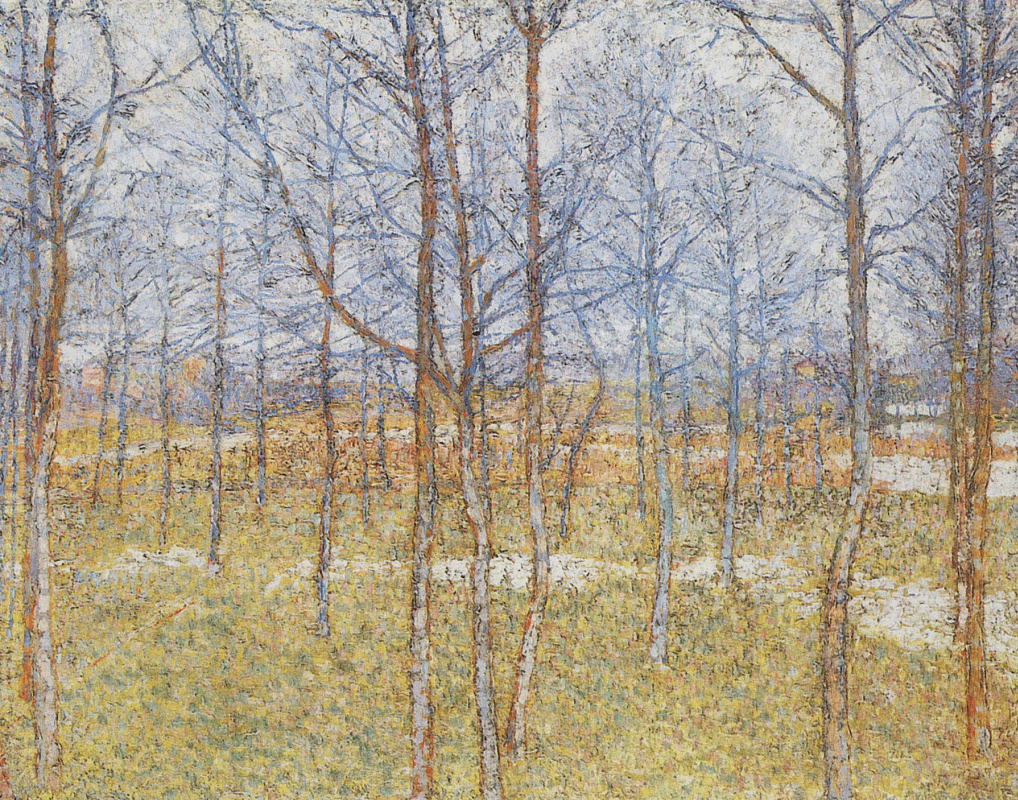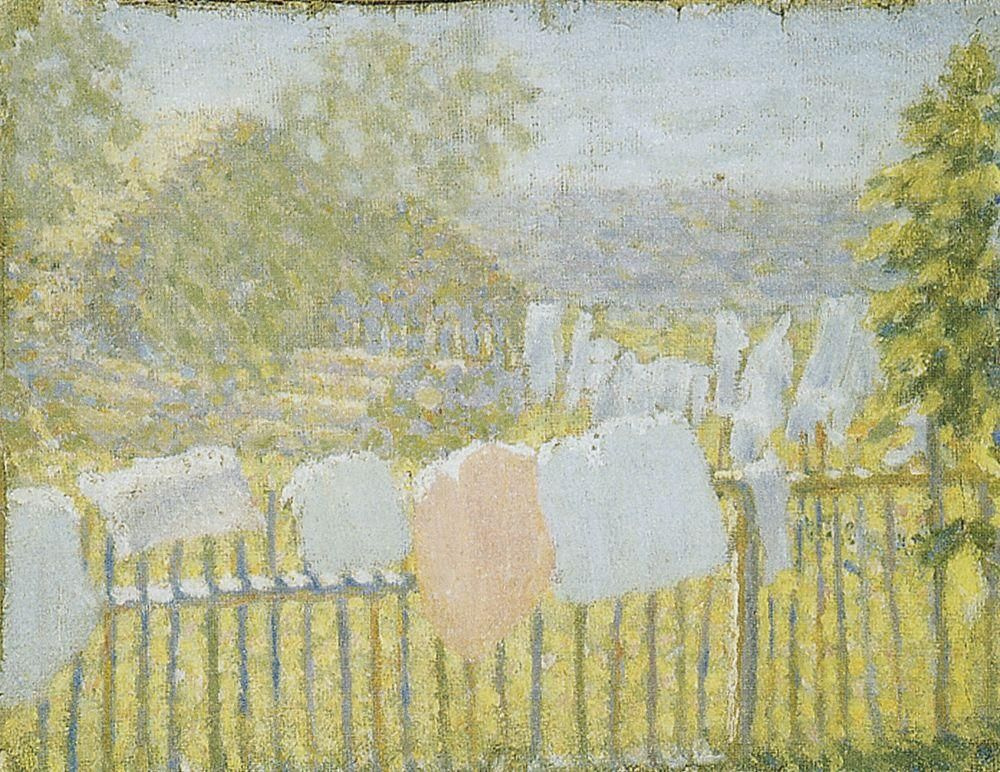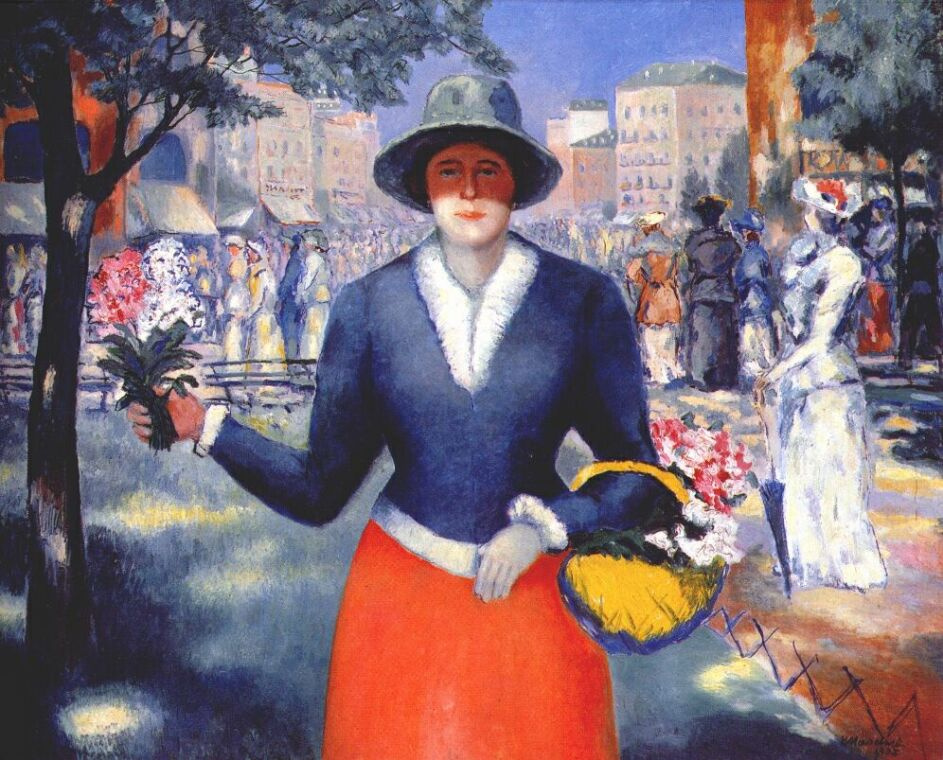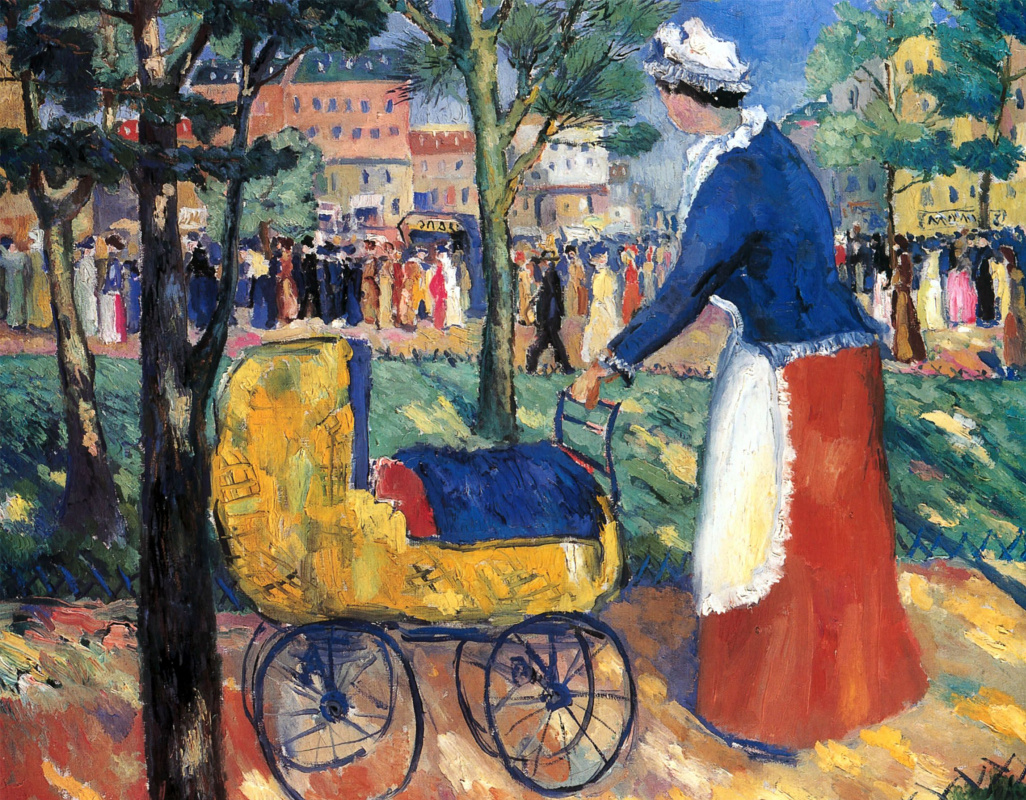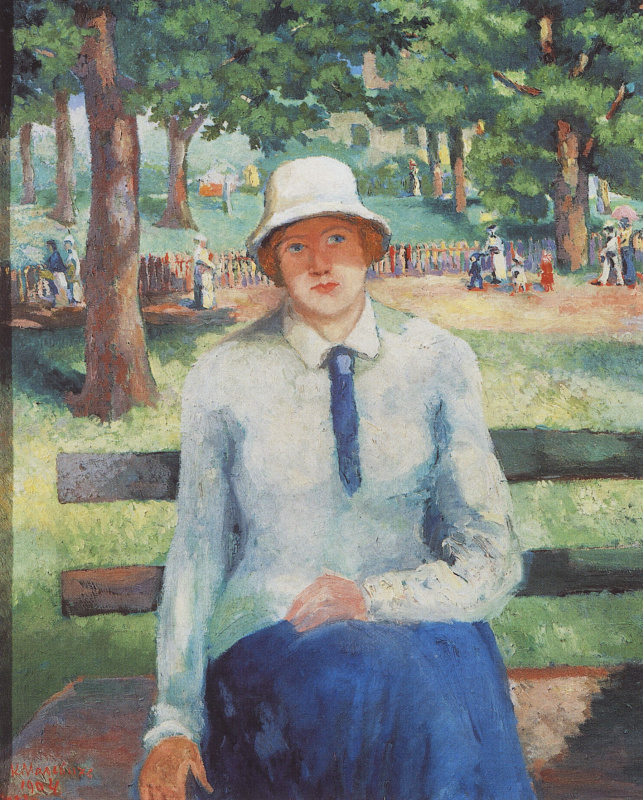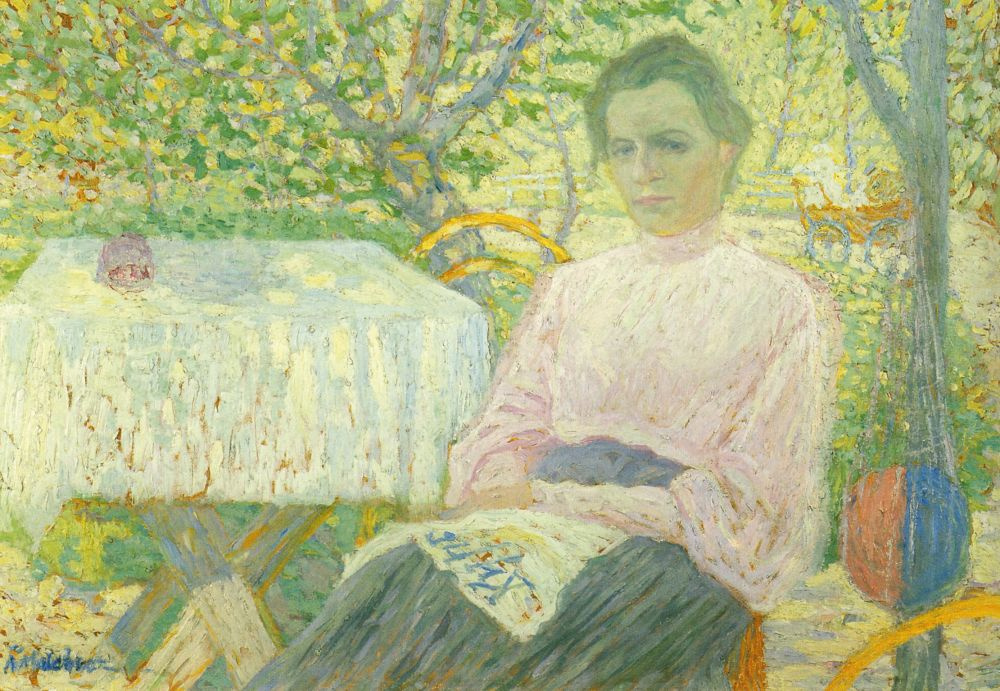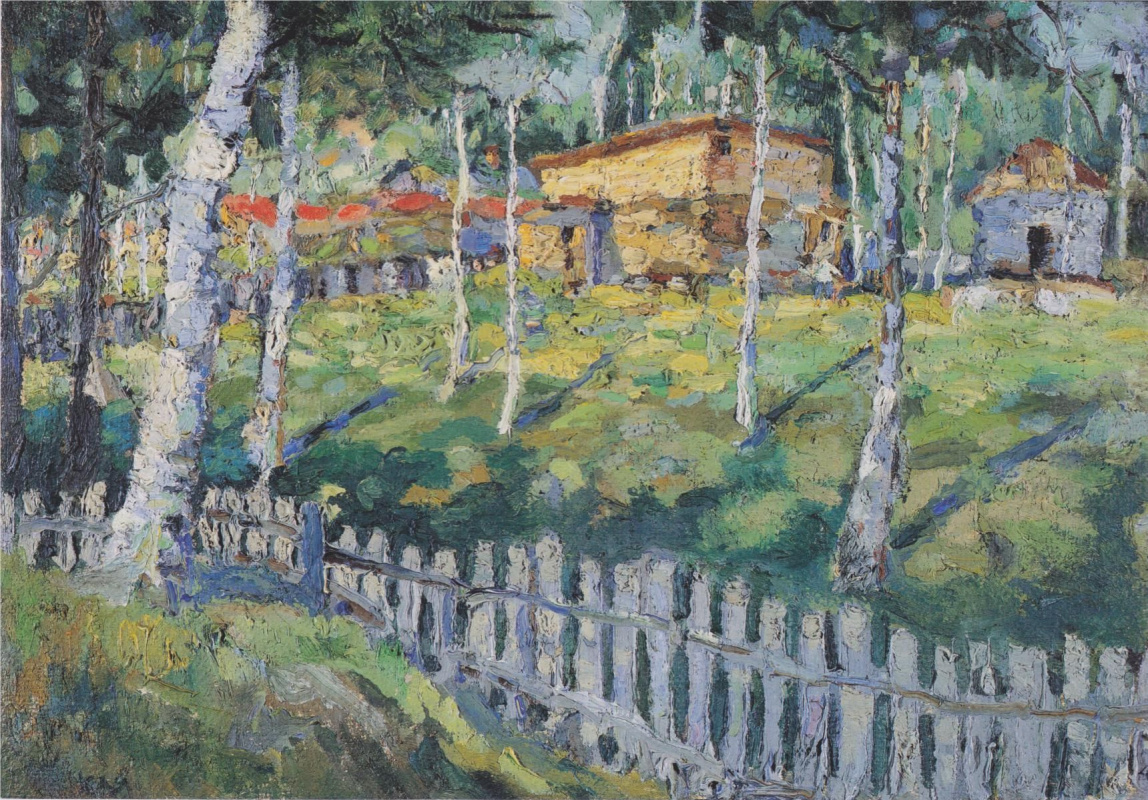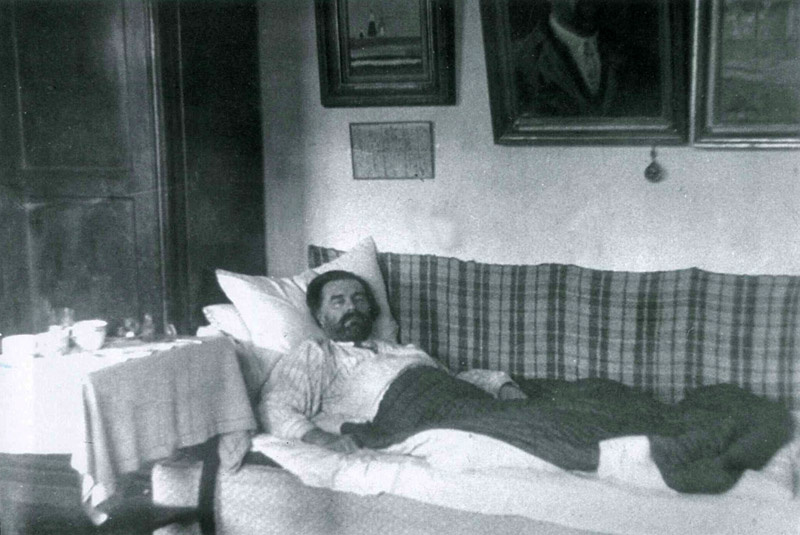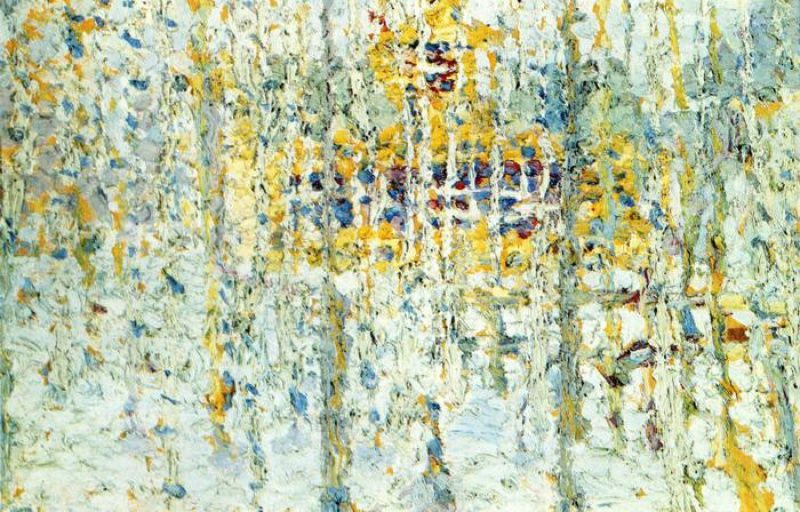Kazimir Severinovich Malevich was a great story-teller, the sincerest, successive and inventive mystifier of own biography. Malevich made a mess of things and to a great extent invented the story of his relationships with impressionism
, like some people invent stories about the first love. Actually this was a short love affair of a young man with plain air sketches, followed many years later by unexpected meeting of the adult and established artist with his first love. They changed considerably and there were things to talk about.
Malevich liked to tell everyone that this adult and serious dialogue with impressionism had happened yet in his youth. He knew everything and foresaw it, he felt that love to be a fate-like and breath-taking, but followed by a mature and real love affair with Suprematism. In order to understand the dates of the meetings and the force of Malevich`s love to Impressionism, art critics had to spend not a single decade, however, to be satisfied only by indirect proofs.
Malevich liked to tell everyone that this adult and serious dialogue with impressionism had happened yet in his youth. He knew everything and foresaw it, he felt that love to be a fate-like and breath-taking, but followed by a mature and real love affair with Suprematism. In order to understand the dates of the meetings and the force of Malevich`s love to Impressionism, art critics had to spend not a single decade, however, to be satisfied only by indirect proofs.

Impressionist affair
In 1928 Malevich celebrated his 30th year of creative activity and The Tretyakov gallery started preparation for his personal exhibition. Being an enthusiastic theorist, a teacher and a preacher of abstract art, Malevich wanted to present this event as the main and vivid lecture about the most important. Especially after the discharge from the post of director of the State institute of artistic culture, after a sudden and persistent requirement to return from his triumphal Berlin exhibition to the motherland, he had a presentiment: his every expression can become the last one. That is why Malevich was not interested in exact dates and his separate achievements like recognized paintings and series of works then — he needed to have time to speak outloud. Russian art critic Alexandra Shatskykh compared Malevich`s preparation for the exhibition with the carefully organized and fashionable curated project in modern museum space: "As a matter of fact, Malevich`s personal exhibition in the Tretyakov gallery, as a result of his efforts, transformed into perfectly arranged artistic and theoretical treatise about his path, that was expressed by the language of museum display. In the scale of the whole XX century it was the first artistic — now more often called a courated — representational project, a clear plan materialized. Devised by means of his will and imagination, this creative "project" was wholly accepted by Malevich`s contemporaries and descendants".Unlike modern curators, Malevich had a huge advantage besides the central idea: he could paint more pictures so that his idea becomes clear, logical and persuasive.
All his life Malevich has been developing the theory of Supermatism as ultimately based on and pushing further the ideas and principles of Impressionism; he counted off his personal artist’s path from his first impressionist sketches painted in Kursk in early 1900s.
Some ten sketches remained since that time were not enough for his personal exhibition dedicated to the 30th year of his creative work. So, Kazimir Malevich painted complicated, coloristic and technically perfect paintings sustaining his theory and dated them back to 1903, 1904 or 1910.
"They are too good to be authentic", — made their assessments fine art experts 40 years later. "If it had been true, then why would so bright impressionist, as Malevich was, have not been enrolled at a school of arts?", — proved they guesses of each other, doing a puzzle from the facts of the artist’s life history. "Such brushstrokes and compositions could arise only from Supermatism", — concurred the art explorers and corrected the dates on the masterpiece canvases exhibited in museums adding some more than 20 years.
"They are too good to be authentic", — made their assessments fine art experts 40 years later. "If it had been true, then why would so bright impressionist, as Malevich was, have not been enrolled at a school of arts?", — proved they guesses of each other, doing a puzzle from the facts of the artist’s life history. "Such brushstrokes and compositions could arise only from Supermatism", — concurred the art explorers and corrected the dates on the masterpiece canvases exhibited in museums adding some more than 20 years.
Magic and Revelations
Art critics explained Malevich’s return to figural art and impressionist motives in different ways, including his age, political pressure, financial obstacles, and looming over the avant-garde thread coming from the state. They also proposed a theory that the artist simply finished his work on the canvases he had started more than 20 years before. The other theory read that for his personal exhibition in 1928 he likely repeated those important early works he had brought out from the Soviet Union to Germany and kept in Berlin. Jean Claude Marcade, French researcher and curator, gently put those theories into a cold storage and proposed the one most indubitable for Malevich: "Malevich has changed his career as a matter of course (but not under the chronological sequence) realized in his representation of art from Impressionism to Suprematism". So, in this logical order Two Sisters, Flower Girl and Unemployed Girl should be placed somewhere dated as of early 1900s.Malevich, being a master of a scale of colors and impressionist brushstroke technique, has been mystifying several generations of the audience. However, the artist could barely hide his Supermatism experience behind the academic technique and manner. Over and over again Malevich refers to Supermatism: it is revealed either in the glowing skirts of pure saturated colors or in accurate geometric shapes of roofs and buildings in the background. Claude Marcade counted minimum five horizontal rows in the Two Sisters picture; and figures in the first row dominate exactly like in his post supermatic canvases Hay Making and Peasant Woman
Similarly, an adult and wise family man in his attempt to tell his children about the first love experience in correct and pedagogical manner would fabricate the letters of his teens imitating neat handwriting and, at the same, avoid speaking about his own memories and experience, the plates broken in the family kitchen, the unsaid proper words, partings, sleepless nights and hundreds of cups of coffee made in the morning after.
Though, it does not mean the first love did not exist.
Similarly, an adult and wise family man in his attempt to tell his children about the first love experience in correct and pedagogical manner would fabricate the letters of his teens imitating neat handwriting and, at the same, avoid speaking about his own memories and experience, the plates broken in the family kitchen, the unsaid proper words, partings, sleepless nights and hundreds of cups of coffee made in the morning after.
Though, it does not mean the first love did not exist.
True Impressionism
Malevich had been working in the pure impressionist manner for four years and all his life he remembered his first art impression, his revelation: "…I faced the unique phenomenon in my artistic perception of the Nature. A new white painted house was in front of me amid the trees, the day was shiny, the sky was cobalt, a shadow was on one side of the house and the other side was brightly lit by the sun. For the first time I saw light reflexes of a blue sky and pure and transparent tones. Since then I began working with light painting, heartwarming and sunny… Since then I have become an impressionist".This link had never been broken for Malevich but strengthened with his impression from exhibitions and discovery of significant impressionists' paintings in Sergei Shchukin personal collection. There Kazimir Malevich for the first time saw the Rouen Cathedral by Claude Monet and was deeply impressed that gave an impulse to his further theories and influenced on his view on the history of art in whole: "For Claude Monet painted plants on the cathedral walls were necessary and he considered the cathedral surface as seed beds with his paintings growing on them like beds on fields with grass and corn growing there. We say the corn is beautiful and grass is nice in valleys but we never mention the soil. We have to treat painted subject in the same way but not a samovar, cathedral, pumpkin or Gioconda. While an artist is painting, planting his painted subjects, he has to sow them in such a way that a real subject will be hidden because the painting seen by the artist is growing from it. Otherwise, instead of painted subjects a real clean bowl will shine or a pumpkin, pot, pear or jar will be visible and the seed bed will be harvestless."
Monet was the founder of new principles of painting and Messiah for Malevich. He mentioned Monet in his book On New Systems of Art written in Vitebsk in 1919; in late 1920s he wrote an article Aesthetics for the New Generation magazine published in Kharkov where Monet was depicted as an embodiment of painting, on the contrary, Repin was articulated as purely social and psychological sketch
or rather that very "harvestless seed bed".
For Malevich both Monet and Cezanne were founding fathers of new painting not simulating the reality but creating new painted substance. This substance directly influenced a viewer, without involvement of themes, masterful presentations of the characters' states of minds, just only color, shape and composition. All the above would be developed into Supermatism denying the seed beds for painted plants growing. The Supermatism should grow its own painted plants in the air, vacuum and in space.
…After the exhibition held in the Tretyakov Gallery two years had passed and Malevich was arrested. He had been imprisoned for some two months. Avant gardism (including both Suprematism and Impressionism) was aggressively forced out of the arts needed by the State of Soviets.
In 1933 Malevich, who had managed to utter his final statement about art, became fatally ill. Straight above his deathbed one of his first impressionist pictures was hanged, it was a small sketch "Landscape with Yellow House".
…After the exhibition held in the Tretyakov Gallery two years had passed and Malevich was arrested. He had been imprisoned for some two months. Avant gardism (including both Suprematism and Impressionism) was aggressively forced out of the arts needed by the State of Soviets.
In 1933 Malevich, who had managed to utter his final statement about art, became fatally ill. Straight above his deathbed one of his first impressionist pictures was hanged, it was a small sketch "Landscape with Yellow House".






